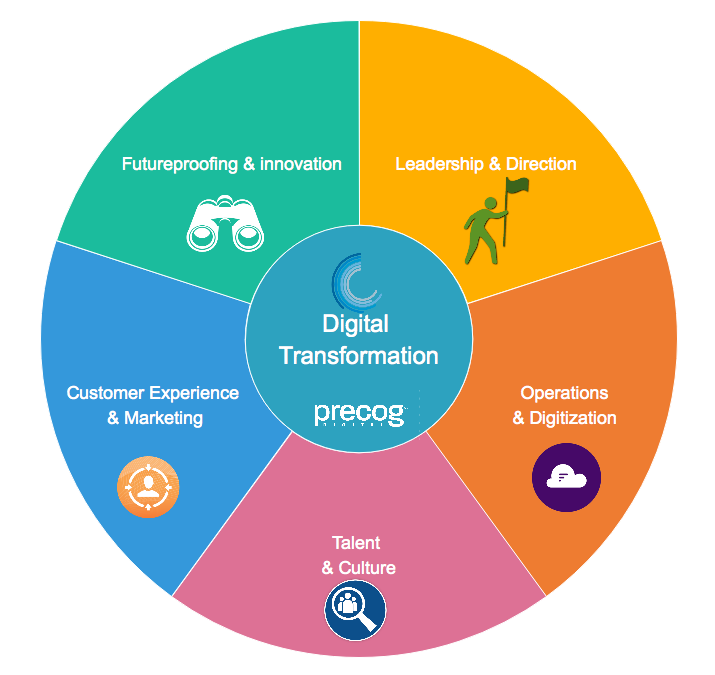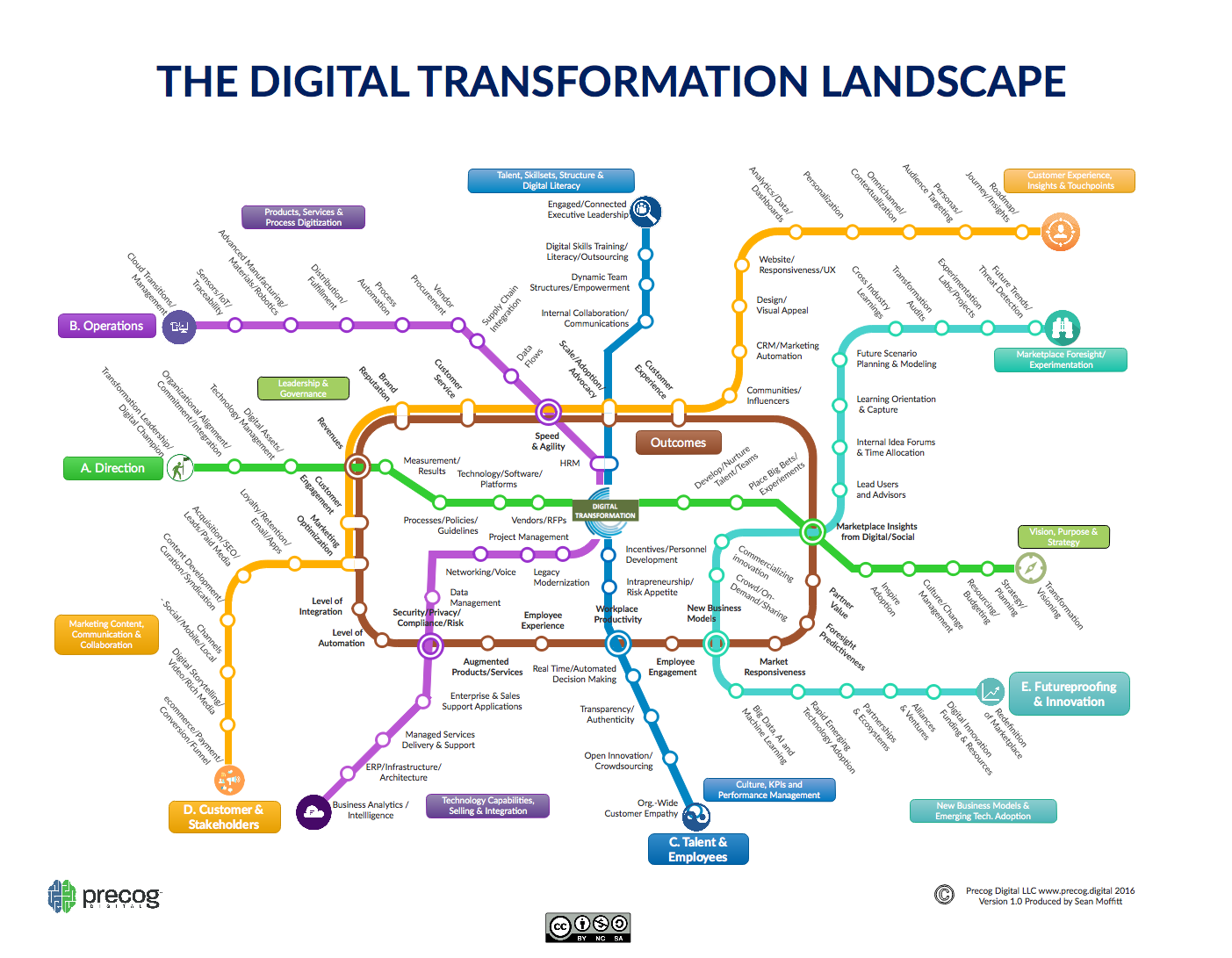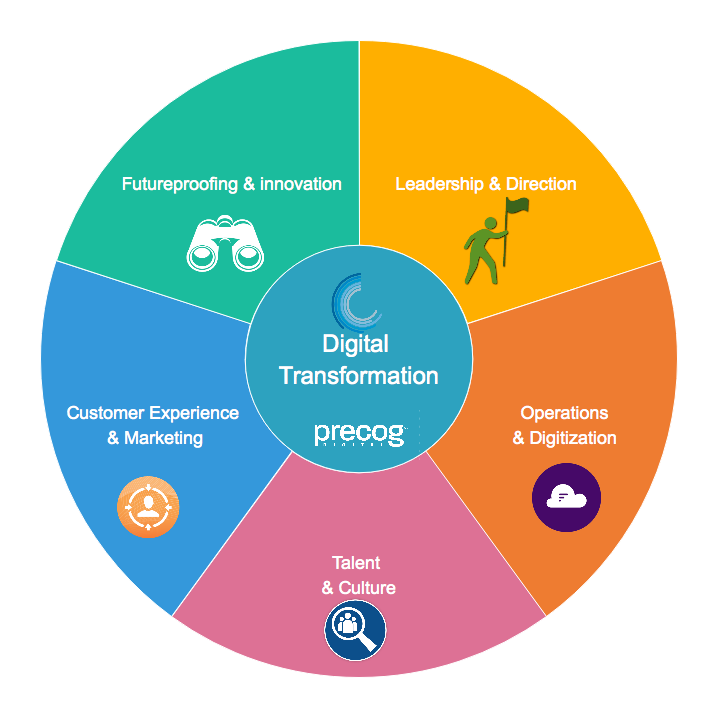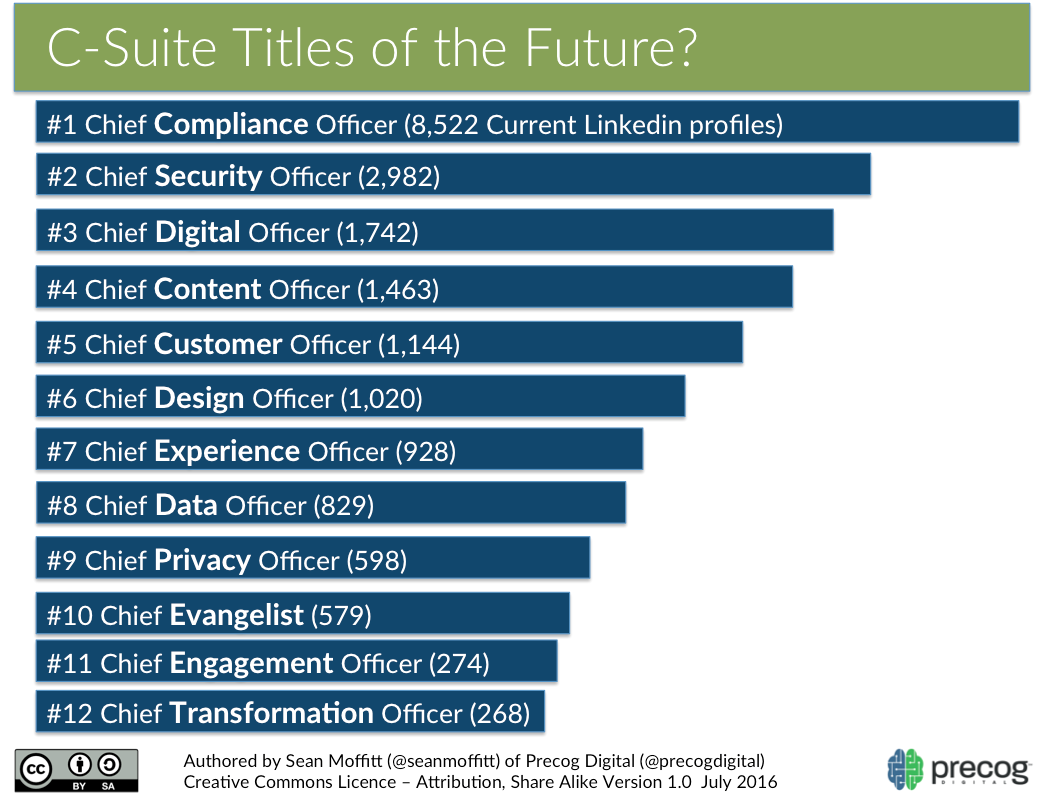
Aug 12, 2016 | Branded Content and Social Business, Connecting with Customers, Culture & Leadership, Customer Experience & Insights, Emerging Trends, Futureproofing & Disruption, Leading Winning Business, Marketing & Brand Engagement, New Business Models & Strategies, Product & Service Innovation, Startups & Accelerators, Technology & New Media, The Crowd, Sharing and On-Demand Economy, WHAT'S NEW

Having looked at more than a hundred digital transformation models, one of the common frustraters I find is that each model seems very tribal.
CIOs author transformation models focused on technology and the inherent issues of integration, platforms, security, features and compliance with passing reference to end users and business leadership.
CMOs author transformation models focused on acquiring and retaining customers talking up customer experience, new media, content/inbound marketing, tracking performance and revenue acquisition with passing reference to issues concerning the organizational change, integration, risk management and technology architecture and execution.
And yet another party – CEOs/COOs author transformation models focused on how to generate competitive positionings, cost and workplace efficiencies, strategic alignment, culture change and organizational speed and delivery with passing reference to functional-specific issues related to technology, marketing, HR, sales and finance.
All of these are incomplete. True digital transformation embeds itself deeply in organizations and changes the culture, behaviours, strategies and tactics of the business, customer-facing, talent leading and technology managing facets of the business.
We’ve attempted to build a more holistic model – including the key 5 transformation segments, 10 sub-segments, 20 expected outcomes and 90 sub-areas of transformation concern. Let us know what you think and if we have missed anything.
Attached is a higher definition PDF to search all the intricacies of our new model digitaltransformationlandscapeprecog


Jul 26, 2016 | Connecting with Customers, Culture & Leadership, Futureproofing & Disruption, Leading Winning Business, Technology & New Media, WHAT'S NEW

Ask any CEO and they will tell you that leading a business is more difficult than it has ever been with more people and topics vying for your attention. A number of relatively new tribes of professionals are asking for their fair share of resources and management credibility, who shall wear the next C-suite crown?
Get past the top 7 (CEO – chief executive officer, COO – chief operating officer, CMO – chief marketing officer, CFO – chief finance officer, CHRO – chief human resources officer, CTO/CIO – chief technology/information officer and CSO – chief sales/business development officer – sorry Chief Strategy Officer and Chief Investment Officer, you just missed the list) and the now the question is – “will a changing business landscape and disruption create opportunity for more executive level roles?”
Attached (above) are 12 roles that may be candidates for the crown. If you group them into clusters, they fall into 4 camps of executive level of talent:
Risk Security Focus – #1 Chief Compliance Officer, #2 Chief Security Officer (note: these two also overlapped with popular Chief Risk Officer) and #9 Chief Privacy Officer are focused on the legal, regulatory, privacy, security, risk management and disaster recovery demands and stewardship for the business in an increasingly complex age where threats might not be seen or forecast.
Customer Experience Focus – #5 Chief Customer Officer, #6 Chief Design Officer, #7 Chief Experience Officer, #10 Chief Evangelist and #11 Chief Engagement Officer underscore the need to get closer and understand customers at a strategic level.
Digital Focus – #3 Chief Digital Officer, #4 Chief Content Officer and #8 Chief Data Officer point to a need for business to get more sophisticated about technology at an executive level with the explosion of technologies, digital media and sources of information and data sources now available.
Business Change Focus – creeping in at the bottom of the list is #12 Chief Transformation Officer – suggesting that the imperatives for business are so great that they need to move beyond a specific function and instead be spearheaded by a centralizing focus.
So what do you think? Who will be next? Which will have the lasting power to stick around? Is there a better new way to the C-Suite than these 12, let me know.





